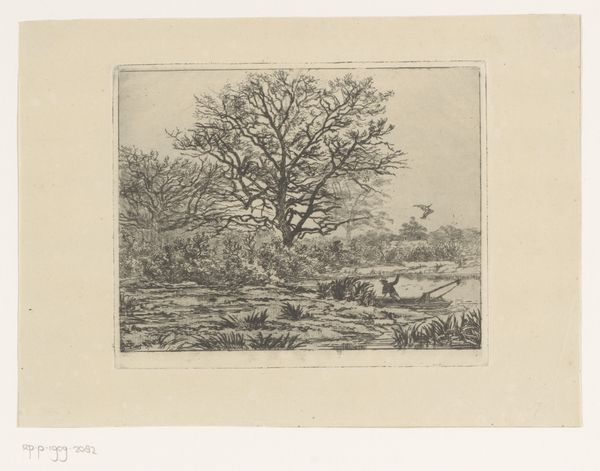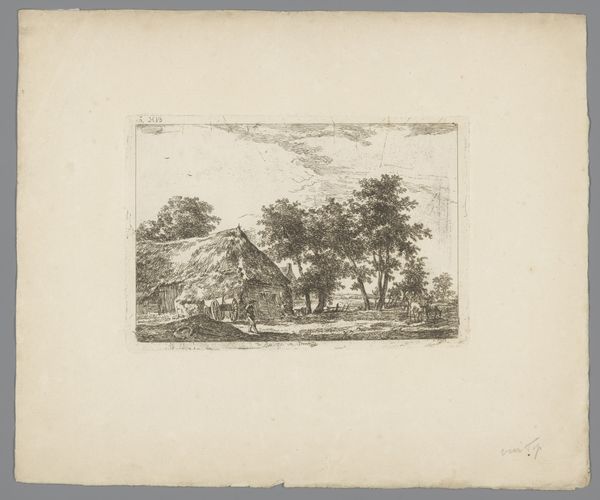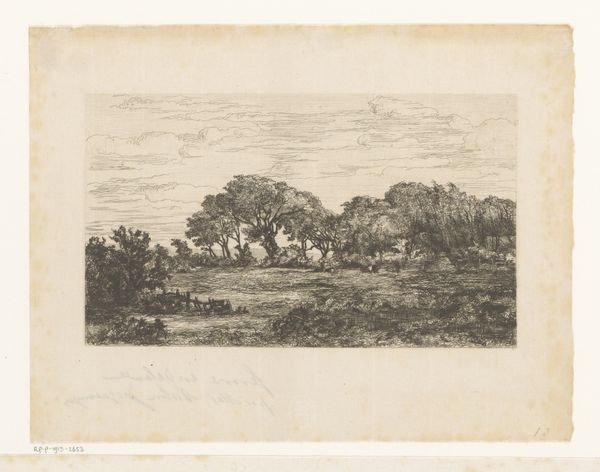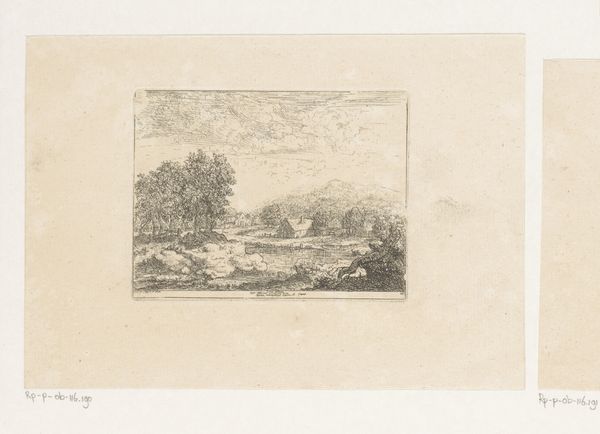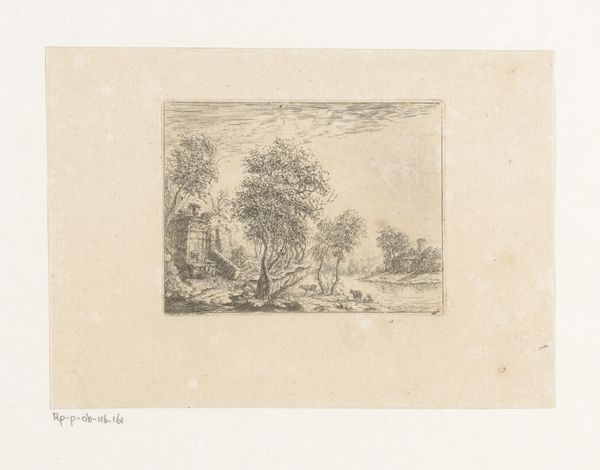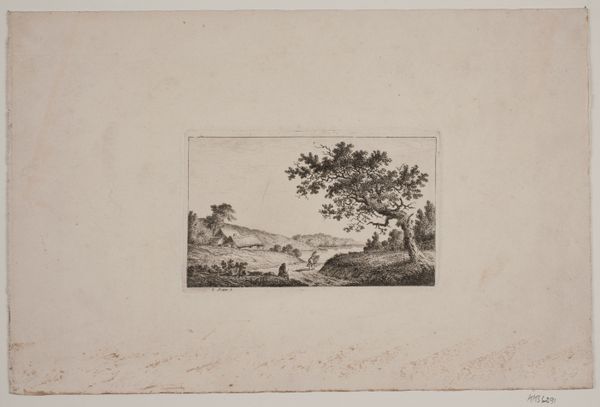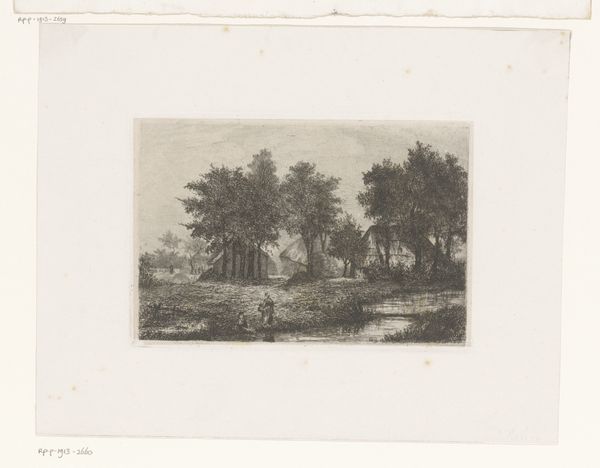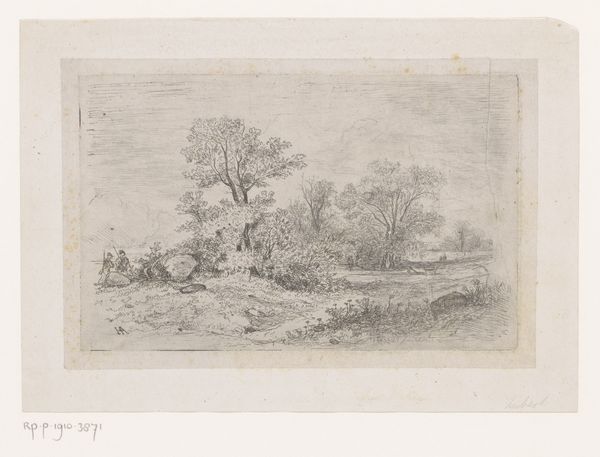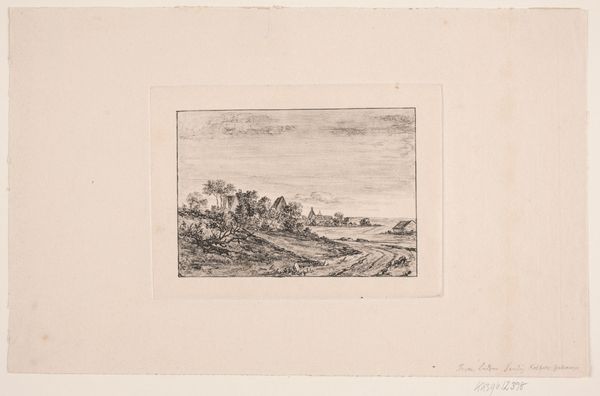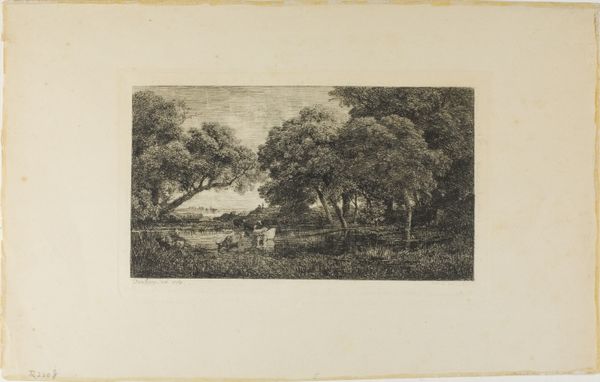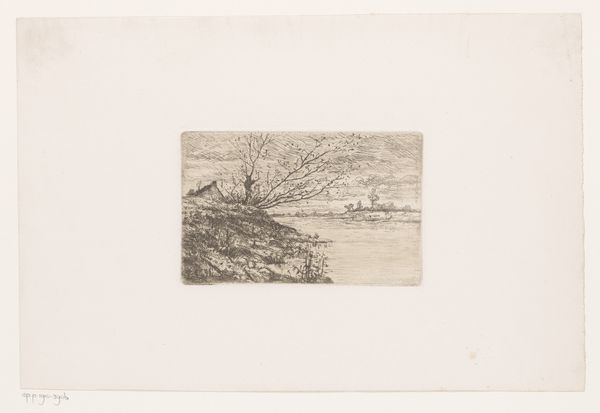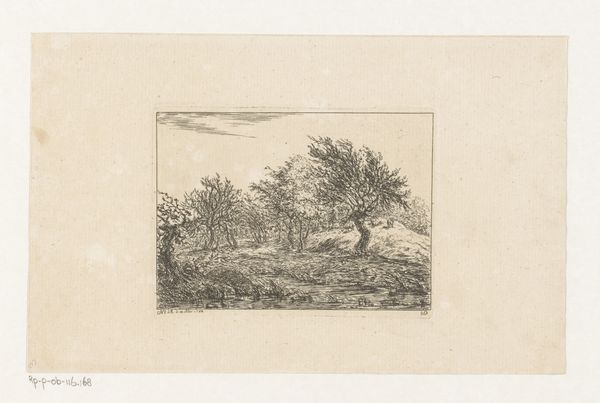
print, etching
# print
#
impressionism
#
etching
#
landscape
#
modernism
#
realism
Dimensions: height 78 mm, width 120 mm
Copyright: Rijks Museum: Open Domain
Curator: What we're seeing here is "Groep pijnbomen aan de kust bij Hyères", or "Group of pine trees on the coast near Hyères," an etching by Carel Nicolaas Storm van 's-Gravesande, dating from around 1872. The print is currently held here at the Rijksmuseum. Editor: My first impression is one of solitude. The trees, despite being grouped together, have this lonely, windswept appearance. It feels raw and immediate, as if the artist were standing right there, battling the elements to capture the scene. Curator: Exactly. Storm van 's-Gravesande was known for his realist landscapes, and you see that attention to detail here. Look at the etching technique – the density and direction of the lines creates depth and texture. It moves between suggesting the rough bark of the trees and the shimmering light on the water. Editor: It’s also worth considering that as an etching, the materiality becomes really relevant. The acid-resistant ground, the metal plate – these choices allowed for that incredibly fine detail and those delicate gradations of tone that evoke such atmosphere. It’s not just observation, it's craft and technique working to suggest a particular experience of place. Curator: Indeed. One could analyze how he organizes the visual space, creating a sense of depth with the layering of forms. The dark trees in the foreground act as a framing device, guiding the viewer's eye towards the lighter, more diffused background. Semiotically, the image evokes feelings of introspection, melancholy perhaps. Editor: I appreciate the melancholy, but let’s remember Hyères was a retreat, especially for artists seeking respite from industrialized northern Europe. We have the artist etching en plein air, wrestling with his materials and capturing a site associated with healing. We cannot ignore the importance of nature as a sort of remedy being literally etched on the metal. Curator: Well, whatever angle we examine it from, it is undeniable that the work is striking in its evocation of the atmosphere and physical conditions of that specific locale. Editor: I concur; what's captivating here is tracing the process, recognizing the place, and sensing the presence of an artist working.
Comments
No comments
Be the first to comment and join the conversation on the ultimate creative platform.
